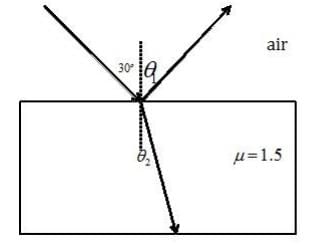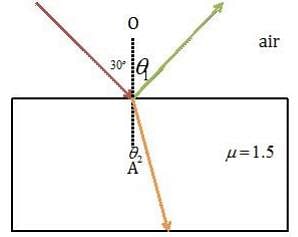Test: Physics - 1 - MCAT MCQ
15 Questions MCQ Test MCAT Mock Test Series 2024 - Test: Physics - 1
Net force acting on a body moving with constant velocity is zero. Which of the following isincorrect?
| 1 Crore+ students have signed up on EduRev. Have you? Download the App |
A car moving at 25 m/s suddenly stops by applying brakes on observing a stoplight. If the time taken during the process of stopping is 1.5 s, what is the displacement of the car?
What would be the moment of inertia of a thin-walled fluorescent lamp having radius of 3 cm and mass of 50 grams?
Displacement of a particle in SHM is given as x(t) = 23 sin(314t) cm. What is the amplitude and frequency of oscillation of the particle?
A cylinder of height 2.5 m is filled completely with water. A hole is made at the bottom of the cylinder in such a way that water is coming out of it. What is the velocity of water coming out of the cylinder?
Keeping the current same in a circular wire, radius is getting doubled. What will the new value of magnetic moment be, if the initial magnetic moment is 3 × 10-5 Am2?
Two blocks of masses M and 4 M are moving under the effect of the same force, F on a frictionless table as shown below. What would be acceleration of the smaller mass? (Assume smaller mass is at rest with respect to the larger mass)

Consider the figure given below. B is the nodal plane or ground. A body of mass M is kept on a horizontal plane A at a certain height above the plane B. Plane C is at same height from the ground (B) as that of plane A. Which of the following statements is correct?


Potential energy of the body is non-zero with respect to the plane A
Potential energy of the body is non-zero with respect to the plane C
Potential energy of the body is non-zero with respect to the plane B
An object A of mass 40 kg at 600 C has internal energy of 4000 J. If it is kept in contact with another object B of mass 40 kg at 650 C having internal energy 4500 J, then which of the following statements is true regarding heat transfer? (Assume boundary of contact can allow heat transfer to take place)
Three batteries each of 25 V having zero internal resistance are connected in series with a resistance of 100 Ω. What would be the current in the circuit?
Consider the figure given below.

What are the values of Θ1 and Θ2 for the figure if a ray of light is incident at from air to a medium of refractive index 1.5?
|
45 tests
|



















